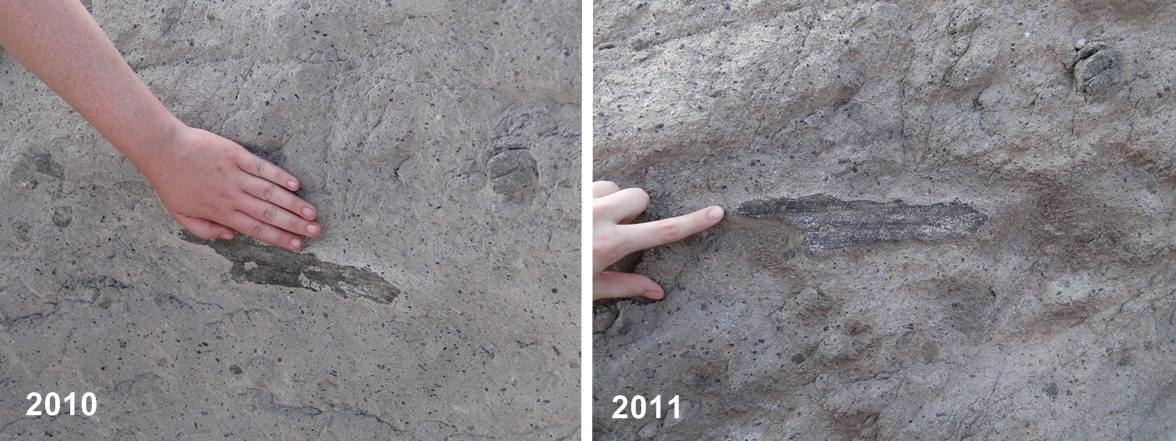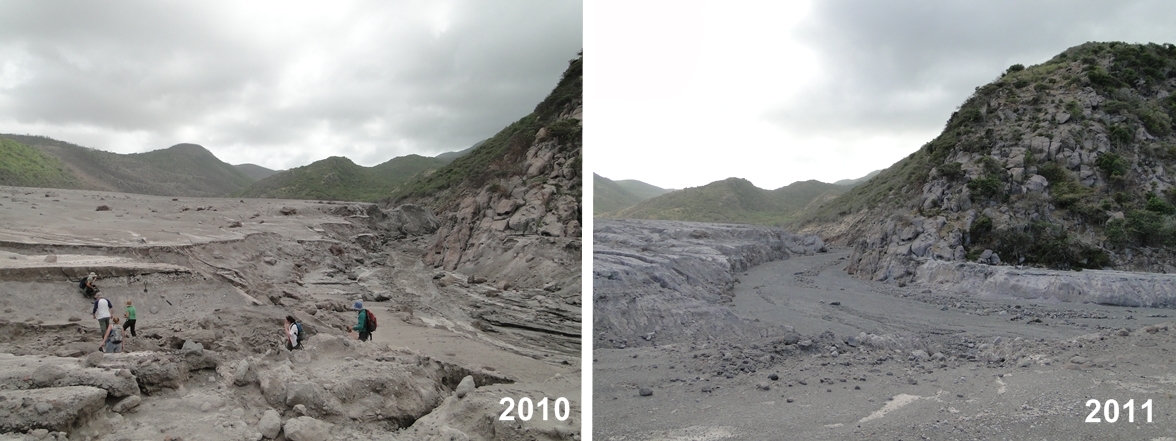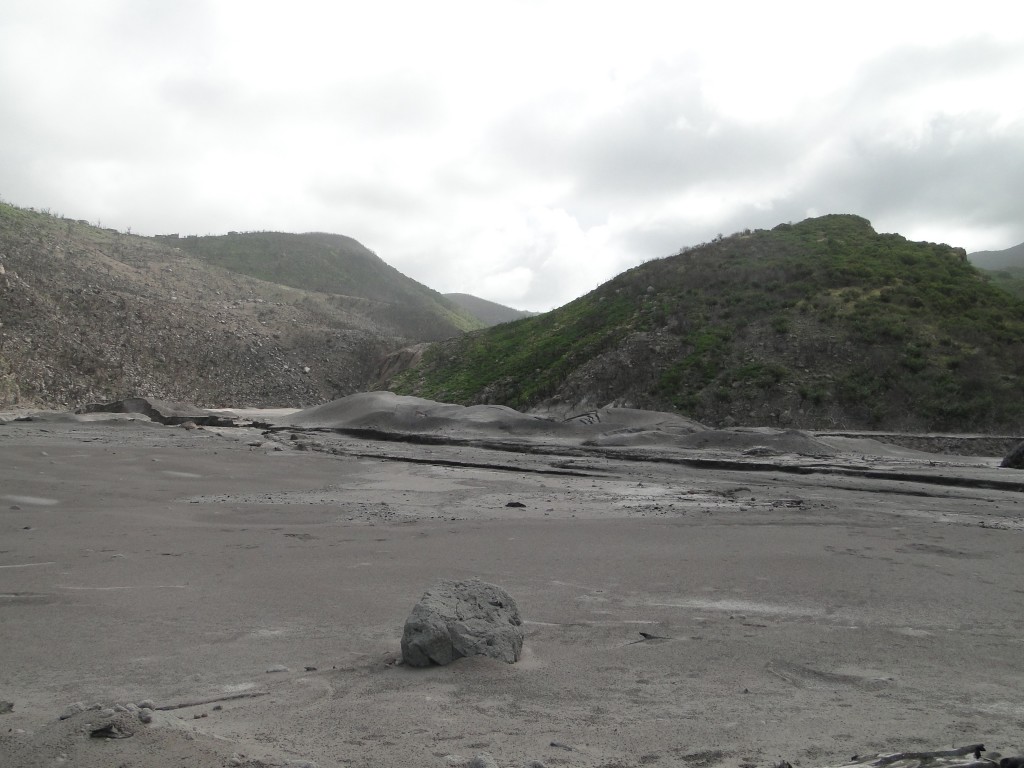27 April 2011
Soufriere Hills Volcano: Recent deposits in 2010 and 2011
Posted by Jessica Ball
Last year I wrote about the February 2010 dome collapse deposits of the Soufriere Hills lava dome, and this year at the SHV: 15 Years On Conference I had the chance to revisit some of the very same spots. These deposits are mainly pyroclastic material (ash, dome rock and pumice), left behind after pyroclastic flows, surges, and a 50,000 ft (~15 km) high ash plume were created during a major collapse of the lava dome. These deposits extended the eastern coastline of Montserrat almost a km in the area of the old Bramble Airport, and surges were even observed flowing out over the ocean on the eastern side of the island. Here are a few before-and-after shots of the deposits:

This is the view you get when you descend into the Trants region (the area covered by the February 2010 collapse). There was quite a bit of erosion in less than a year; the cone-shaped phreatic explosion craters in the middle ground are now highly incised and almost unrecognizable.

There's the top of the sugar mill's chimney stack. The surface of the deposits around the stack is a bit rougher now, since a lot of the finer ash has been carried away by wind and water.

There's that same friction mark on one of the large boulders in the deposit. The glassy mark hasn't changed much, but the mafic enclave in the upper right of the images is really beginning to deteriorate.

This is the drainage which leads to a pumice flow in the Farm River Valley. There's a huge difference between last year and this year; the channel bottom is much smoother and more infilled now, and the channel walls are steeper. The surface of the deposits to the left is also much rougher and more incised.

Not quite the same photo, but it's easy to see how much more eroded this area is. In the background of the photos, it's possible to see more phreatic explosion craters, which formed when the hot deposits buried a stream and steam explosions reworked the pyroclastic and volcaniclastic material.
Here’s another view of those phreatic explosion craters (this photo was taken from a few paces in front of the pumice flow lobe:

Phreatic explosion craters in July 2010. These features are very eroded and almost unrecognizable now - an interesting example of a very fleeting volcanic deposit that might have been misinterpreted in the geologic record, had there not been witnesses to the actual explosion events.

One last example of the power of erosion: this isn't quite the same location in the drainage channel, but it was clear that the nice fresh surfaces we saw in 2010 are no more, and that a lot of material has either been pulled out of the channel walls or fallen down on its own.


 Jessica Ball is a volcanologist at the U.S. Geological Survey, researching volcanic hydrothermal systems and stability, and doing science communication for the California Volcano Observatory. She previously worked at the Geological Society of America's Washington DC Policy Office, learning about the intersection of Earth science and legislative affairs. Her Mendenhall postdoc and PhD focused on how water affects the stability of volcanoes, and involved both field investigations and numerical modeling applications. Her blogging covers a range of topics, from her experiences in academic geosciences to science outreach and communication to her field and lab work in volcanology.
Jessica Ball is a volcanologist at the U.S. Geological Survey, researching volcanic hydrothermal systems and stability, and doing science communication for the California Volcano Observatory. She previously worked at the Geological Society of America's Washington DC Policy Office, learning about the intersection of Earth science and legislative affairs. Her Mendenhall postdoc and PhD focused on how water affects the stability of volcanoes, and involved both field investigations and numerical modeling applications. Her blogging covers a range of topics, from her experiences in academic geosciences to science outreach and communication to her field and lab work in volcanology.